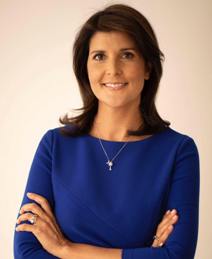How Does Nikki Haley’s Nebraska Primary Showing Stack Up Against Her Predecessors?
Only three ex-presidential candidates over the last 68 years received more support in the state

Haley was two months and eight days removed since she suspended her presidential campaign in early March, and her showing last Tuesday in Maryland and Nebraska mark the sixth and seventh states in which she has received more than 15 percent of the vote since her withdrawal, joining Washington (19.2 percent), Arizona (17.8 percent), Kansas (16.1 percent), Pennsylvania (16.6 percent), and Indiana (21.8 percent).
Haley currently ranks fourth by this measure among all withdrawn presidential candidates since the 1980 cycle trailing Democrat Bill Bradley in 2000 (12 states), John McCain in 2000 (eight), and Bernie Sanders in 2020 (eight).
There is an ample opportunity to situate Haley’s showing in Nebraska in historical context, as the state has held its presidential primary on the second Tuesday in May dating back all the way to the 1956 cycle. [Note: Nebraska Democrats held binding caucuses on March 4th during the 2016 cycle, but also a nonbinding primary in May].
Among the dozens of withdrawn Democratic and Republican candidates to appear on the Nebraska primary ballot since 1956, Haley’s 18.2 percent ranks as the fourth highest.
Leading the way is Bradley, who received 26.5 percent against Al Gore in the May 9, 2000 primary with Lyndon LaRouche (who was still an active candidate) claiming 3.0 percent.
Like Haley, Bradley had exited the race more than two months prior to the primary.
No other Democrat has reached Haley’s level of post-candidacy support in the state during this period under analysis.
On the Republican side, U.S. Senator Bob Dole from the neighboring state of Kansas received 22.3 percent at the May 10, 1988 primary – one month and 11 days after his exit from the race.
Ex-candidates Pat Robertson (5.1 percent) and Jack Kemp (4.1 percent) were also on the Nebraska ballot that cycle.
Finally, in 2016, Texas U.S. Senator Ted Cruz withdrew just seven days before the May 10th primary and received 18.4 percent followed by John Kasich (11.4 percent) who withdrew six days prior.
Ben Carson (5.0 percent) and Marco Rubio (3.6 percent) also were on the ballot approximately two months following their withdrawal.
After Tuesday’s contest in Kentucky, Haley will be on the ballot in one more primary – New Mexico, on June 4th.
Follow Smart Politics on X/Twitter.
